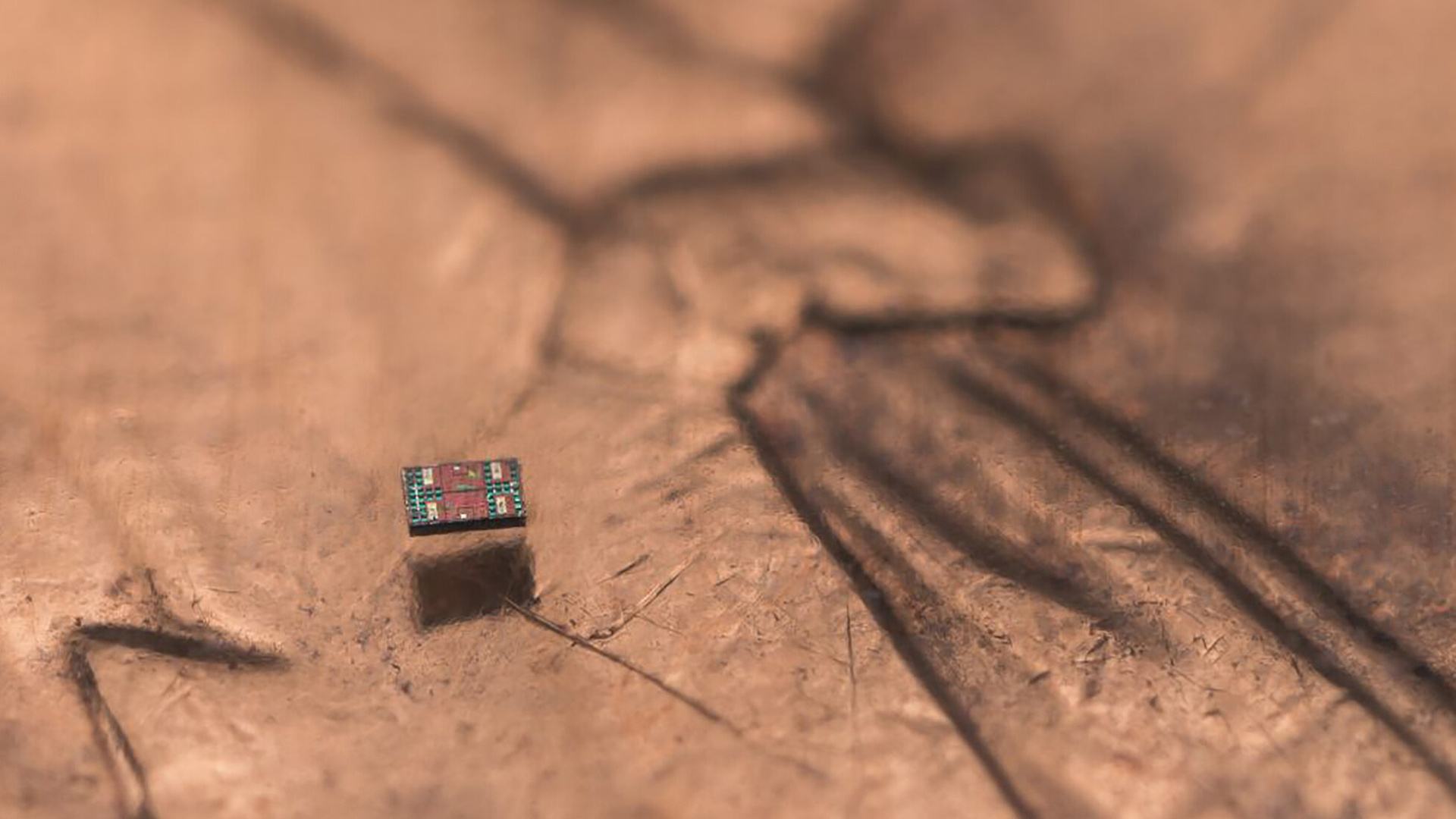Robot performs flawless surgery, alone
PLUS: Patients control AI and robotics with thought
Read Online | Sign Up | Advertise
Good morning, robotics enthusiasts. A robot just nailed a critical phase of gallbladder surgery — no hands, no joystick, just pure silicon smarts.
Johns Hopkins’ SRT-H didn’t just follow orders; it listened, adapted, and self-corrected like a junior surgeon learning on the fly. If a robot can now think its way through surgery, how long before it earns the right to operate solo on you?
In today’s robotics rundown:
Robot performs surgery without human help
Chinese robot dog breaks speed record
Futurist Adam Dorr: The robots are coming
Coyote robots guard U.S. military airfields
Quick hits on other robotics news
LATEST DEVELOPMENTS
JOHNS HOPKINS
😷 Robot performs surgery without human help

Image source: Juo-Tung Chen/Johns Hopkins University
The Rundown: A Johns Hopkins robot just nailed a key part of gallbladder surgery with no human hands on deck. Named SRT-H, the robot performed the surgery eight times like a seasoned pro, self-correcting and adapting in real time.
The details:
In trials, the team said SRT-H took spoken commands and adapted throughout the procedure, mirroring a junior surgeon’s learning curve.
The robot operated on a synthetic patient model, using organs from dead pigs, simulating the complexity and unpredictability of live human tissue.
Unlike traditional surgical robots, which follow pre-set instructions, this system demonstrated adaptive learning, adjusting its actions on the fly.
Backed by federal funding, the team calls this a leap toward robots that combine machine precision with a surgeon’s improvisational skill.
Why it matters: SRT-H marks a new era for surgical robots, adapting and learning in real time instead of just following scripts, and even acing simulated medical emergencies. But don’t expect fully automated robot surgeries on humans just yet; human trials aren’t expected until later this decade.
MIRROR ME
🔥 Chinese robot dog breaks speed record

Image source: Mirror Me
The Rundown: When it comes to robot dogs, Boston Dynamics’ Spot often steals the show. But this time, China’s Mirror Me startup is turning heads with Black Panther II — a four-legged robot that just set a new record by sprinting 100m in 13 seconds.
The details:
Weighing in at 38 kg and standing just over half a meter tall, Black Panther II ran a record-breaking 100m dash on live TV, topping 10.4m/second.
The pace beats Boston Dynamics’ WildCat, which has been shown to reach 8.8m/second in testing, and is on par with top human sprinters.
Black Panther II’s legs are crafted from carbon fiber and mimic the anatomy of jumping mice and cheetahs to take giant leaps.
AI-driven algorithms enable the robot dog to adapt its gait in real time, adjusting to different terrains and optimizing stride patterns for speed.
Why it matters: While Usain Bolt still holds the 100m record, China’s Black Panther outpaces almost all humans except the world’s top sprinters. Its AI-driven gait adaptation and biomimetic design, blending animal-inspired mechanics with real-time machine learning, hint that much smarter and faster robots are on the way.
ROBOT REVOLUTION
🤔 Futurist Adam Dorr: The robots are coming

Image source: Ideogram/The Rundown
The Rundown: Adam Dorr, research chief at the tech futurist think tank RethinkX, predicts that within two decades, robots and AI will outpace human labor so completely that “work” as we know it could vanish from the economic map.
The details:
In a Guardian interview, Dorr sketches a future where robots — cheaper, faster, and smarter — replace not just factory hands but nearly every other profession.
His team argues that the current wave of automation isn’t an industrial revolution but an extinction-level event for the labor market.
Dorr’s thesis is as stark as it is sweeping: whatever your job, whatever your sector, machines will soon do it better and for less.
The pattern, he says, is relentless and predictable: Costs keep dropping, capabilities keep climbing, and society pivots overnight.
Why it matters: Many economists argue that the real story is more complex: robots will likely automate repetitive tasks, but humans will remain essential for jobs requiring judgment, empathy, and adaptability. In either case, Dorr says that if the society can adapt, this could be the gateway to an era free from the grind of wage labor.
MILITARY ROBOTS
🐦⬛ Coyote robots guard U.S. military airfields

Image source: ERDC
The Rundown: To avoid disastrous bird strikes on multimillion-dollar aircraft, the U.S. Army Engineer Research and Development Center (ERDC) is swapping out traditional scare tactics for something a bit more cyberpunk: robotic coyotes.
The details:
Dubbed “Coyote Rovers,” these four-wheeled unmanned ground vehicles are topped with life-size plastic coyote figures and programmed to patrol airfields.
Developed with wildlife biologists, the Coyote Rovers have already been tested at bases like Naval Air Station Pensacola, the home of the Blue Angels.
With speeds of 20 mph, these rovers can quickly cover large areas and react to wildlife presence in real time, outperforming earlier robot dog prototypes.
The Coyote Rovers are programmed to autonomously patrol airfields, following set routes, and can operate continuously for days.
Why it matters: Future upgrades aim to add AI and machine learning, letting the bots identify specific species and customize their deterrent tactics. This smart, adaptable approach promises to minimize dangerous wildlife strikes and offers a scalable, cost-saving solution for protecting not only airfields but also other vital infrastructure.
QUICK HITS
📰 Everything else in robotics today
Hugging Face launched pre-orders for its Reachy Mini open-source desktop robots, offering a $449 wireless model with onboard computing and a $299 lite version.
Filics, a robotics company backed by Amazon, secured $16M in funding to scale up its automated pallet handling platform.
A San Francisco “underground” fight club for robots has reportedly emerged, featuring high-end humanoid cage matches.
MIT researchers developed a deep-learning control system that teaches soft, bio-inspired robots to move and follow commands from just a single image.
Chinese startup Shenzhen Dobot posted a clip showing its Atom humanoid cooking a steak while being remotely controlled from nearly 1800 km away via a VR headset.
Chinese startup MagicLab just launched MagicBot Z1, a 4'7" tall Unitree G1 lookalike that can run, kick, and perform advanced yoga poses.
NEURA Robotics teamed up with HD Hyundai Robotics to co-develop and test advanced humanoids for the shipbuilding industry.
Canadian robotics firm Cobionix raised $3M to commercialize CODI, an AI-driven healthcare robot designed to automate and enhance patient care.
Philadelphia startup Daxo Robotics emerged from stealth with its soft robotic “ultra-dexterous” hands featuring “infinite degrees of freedom.”
Chinese humanoid startup Robot Era, a Tsinghua University spinout, raised nearly 500 million yuan ($69M) in a Series A round.
Realbotix just gave its humanoid “girlfriend” a serious upgrade: it now speaks 15 languages fluently and taps the cloud for another 147.
COMMUNITY
🎥 Join our next live workshop
Join our next workshop this Friday, July 11th, at 4 PM EST with Dr. Alvaro Cintas, The Rundown’s AI professor. By the end of the workshop, you’ll confidently be able to install and use Gemini CLI to boost your productivity right from the command line.
RSVP here. Not a member? Join The Rundown University on a 14-day free trial.
See you soon,
Rowan, Jennifer, and Joey—The Rundown’s editorial team
Stay Ahead on AI.
Join 2,000,000+ readers getting bite-size AI news updates straight to their inbox every morning with The Rundown AI newsletter. It's 100% free.






